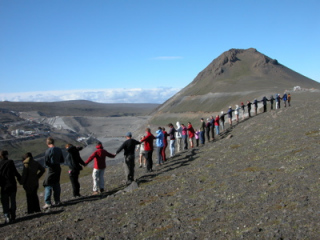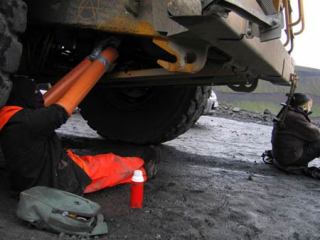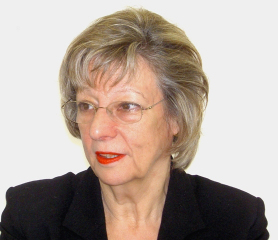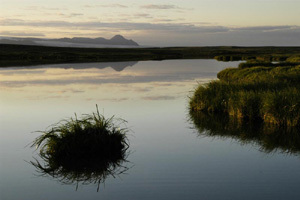Saving Iceland
We have gathered to protest the continuing devastation of global ecology in the interest of corporate profits. We have come here to tip the balance of a struggle portrayed to be national, while actually being much larger: from the Narmada Dams in India, to the proposed Ilisu Dam in Turkey, the story is one of big business and oppressive government. The struggle to save our planet, like the struggle against inhumanity, is global, so we have to be too. We’re here to prevent the Kárahnjúkar Dam project from destroying Western Europe’s last great wilderness.
The industrialization of Iceland’s natural resources will not only devastate vast landscapes of great natural beauty and scientific importance, but impair species such as reindeer, seals and fish, and the already endangered pink-footed goose and several other bird species. Through this mindless vandalism against nature, the Icelandic tourist industry will also be affected and the health and life of the Icelandic people. This industrialization will bring pollution such as Iceland has not seen before. Sulphur dioxide, Nitrogen, and many other chemicals used to process aluminium, are all products of the unnecessary and short-sighted profit-driven environmental barbarism of the aluminium industry. Under the burden of Kárahnjúkar, only one of many dams planned, rivers will choke, and people will choke.
If this dam goes ahead, it will pave the way for similar dams of glacial rivers all over the Icelandic highlands; Thjórsárver (protected by the international treaty of Ramsar!), Langisjór (one of Europe’s most beautiful lakes), the rivers in the Skagafjördur region and Skjálfandafljót. All just to generate energy for aluminium corporations. If this will be allowed to happen Iceland will face the same sad fate as other global communities, which have suffered under similar projects.
Across the world, people are coming together to oppose the blatant lies, corruption and oppression generated by corporations and governments alike. In this spirit, we are asking that all those opposing the Kárahnjúkar Dam organize or partake in solidarity actions globally or locally.
The world isn’t dying, it is being killed – there is no excuse for silence.



